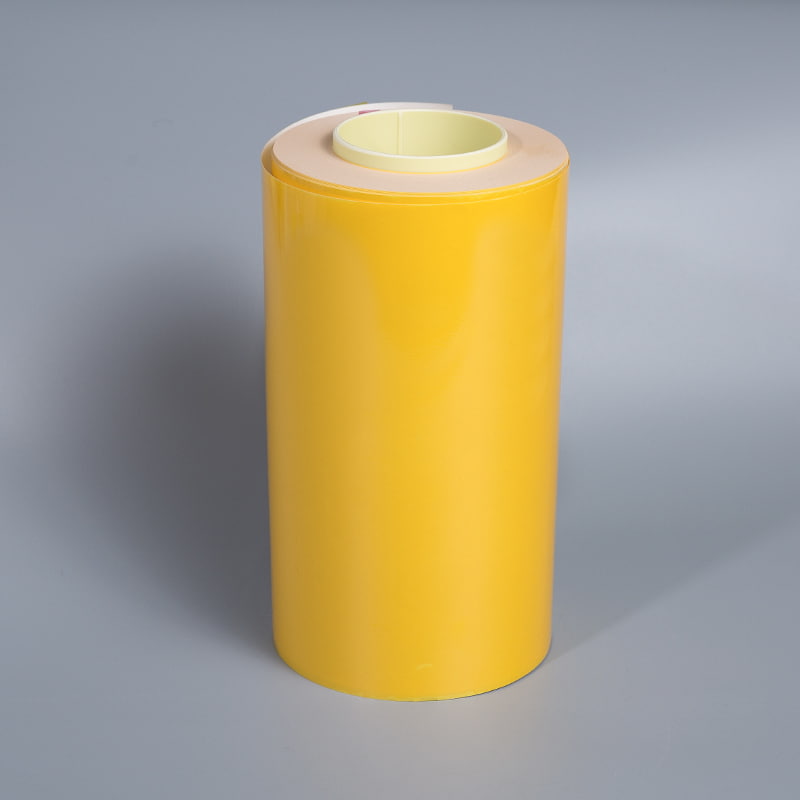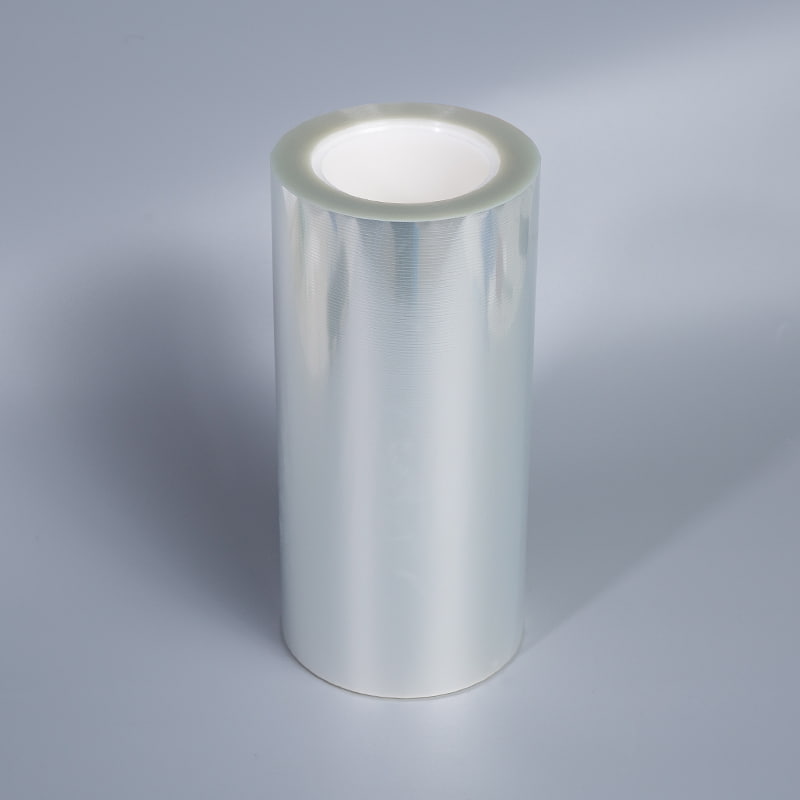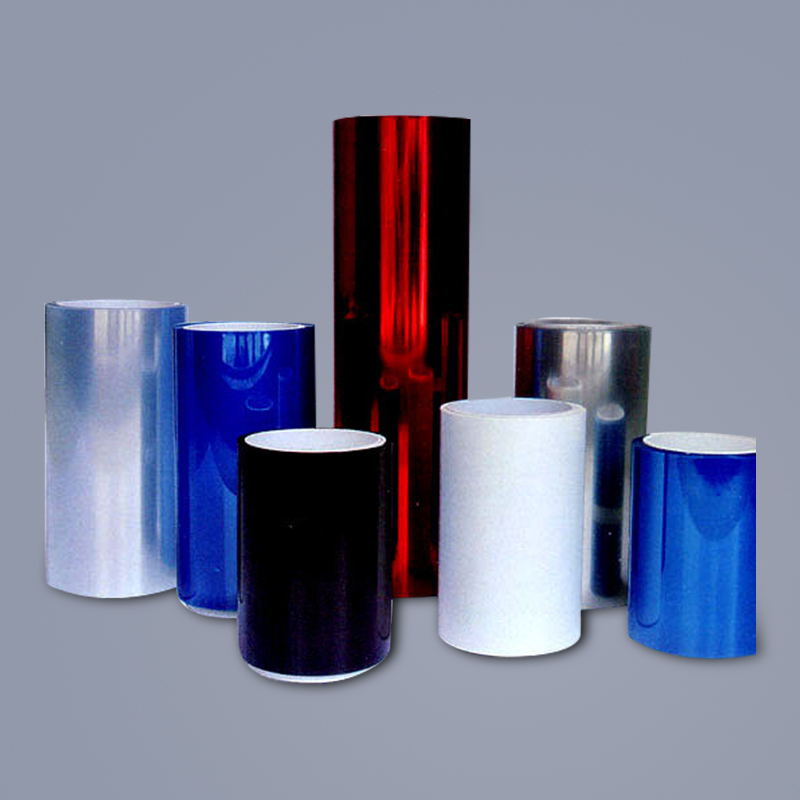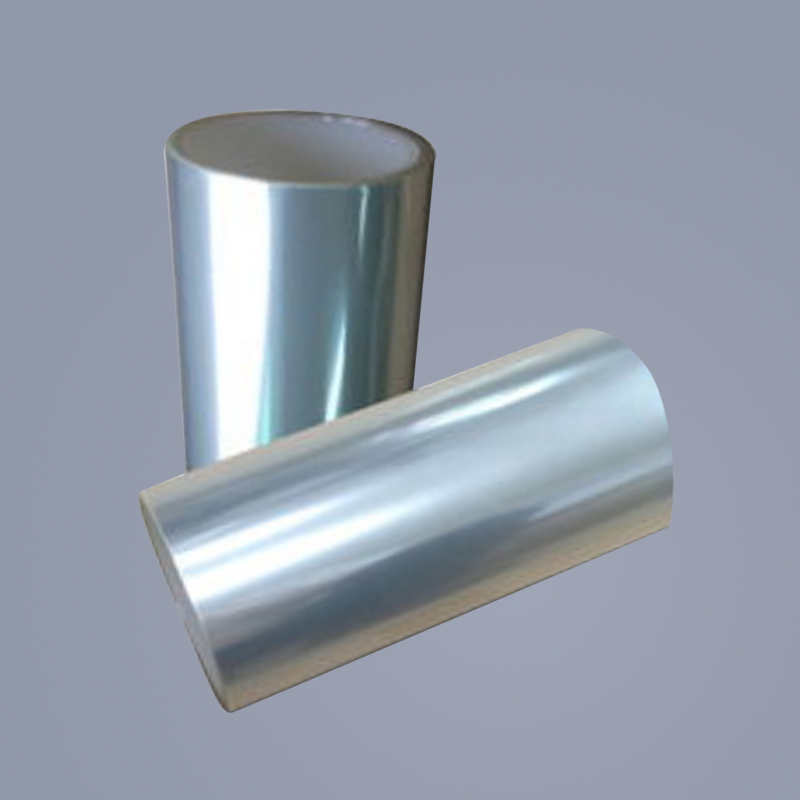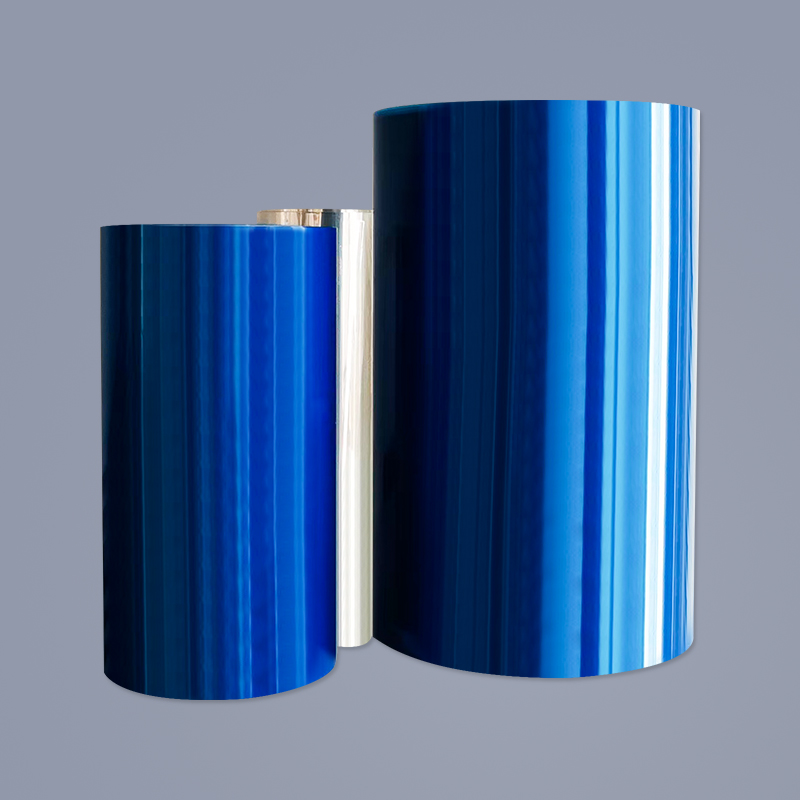PET Release Printed Films are specialized materials playing a crucial role across a multitude of industries. Essentially, they are films made from polyethylene terephthalate (PET) that are treated to have release properties, meaning other materials can be easily peeled away from them after processing or application. This unique characteristic, combined with the inherent benefits of PET, makes them indispensable in sectors like packaging, labels, electronics, and medicine.
But why are PET release liner films for labels and similar products so vital? Their importance stems from their ability to protect sensitive adhesive layers, facilitate the handling and application of sticky materials, and often provide a surface for essential information or branding to be printed directly onto the release layer itself. This blend of protective and functional attributes makes them a cornerstone in various manufacturing and application processes.
2. Basic Characteristics of PET Release Printed Films
The efficacy of PET Release Printed Films is deeply rooted in the intrinsic properties of PET material, coupled with specialized coatings and advanced printing techniques.
Advantages of PET Material
Polyethylene terephthalate (PET) is a highly favored substrate for release films due to its exceptional properties:
- High Temperature Resistance: PET exhibits remarkable thermal stability, allowing it to withstand a broad range of processing temperatures without deforming or losing its integrity. This is crucial for applications involving heat-curing adhesives or high-temperature manufacturing processes. This property also makes it ideal for high-temperature PET release films.
- Chemical Resistance: PET is resistant to a wide array of chemicals, including many solvents, oils, and acids. This resistance ensures that the release film maintains its performance even when exposed to various adhesive formulations or other chemical substances encountered during production or use.
- Mechanical Strength: PET boasts excellent tensile strength, tear resistance, and dimensional stability. This robust nature prevents the film from breaking or stretching during handling, converting, and application, ensuring consistent performance and precise alignment. Its strength also makes it a reliable PET film for adhesive release applications.
The Role of Silicone Coating
The release properties of these films are primarily achieved through a silicone coating (Silicone Coating). Silicone is known for its low surface energy, which creates a non-stick barrier between the PET film and the adhesive material. Key functions of the silicone coating include:
- Controlled Release Force: The silicone layer can be precisely engineered to provide varying levels of release force, from very light to very tight, depending on the specific application requirements. This ensures that the adhesive material can be peeled away smoothly and consistently without damaging the adhesive itself or the substrate it's applied to. This is particularly important for silicone coated PET release films.
- Smooth Separation: The uniform silicone layer ensures a clean and residue-free separation, preventing adhesive transfer or "legging" when the liner is removed.
- Durability: The silicone coating is robust and durable, capable of withstanding the rigors of manufacturing processes and maintaining its release properties over time.
Application of Printing Technology on PET Release Films
Beyond their release characteristics, many PET films are designed to be printed upon, enabling further functionality and branding.
- Information and Branding: Printing on the release film allows for the inclusion of logos, product information, instructions, or batch codes directly onto the liner. This can be critical for traceability, branding, or user guidance.
- Registration and Alignment: Printed marks on the release film can serve as registration points for automated application machinery, ensuring precise placement of labels or components.
- Versatility in Printing Methods: PET films are compatible with various printing technologies, including flexographic, gravure, and digital printing, allowing for high-quality graphics and variable data printing. The development of specialized inks and surface treatments further enhances the printability of these films, making them suitable for PET release film for graphic arts and other demanding visual applications. This opens up possibilities for custom printed PET release liners to meet unique customer needs.
3. Main Application Areas
The versatility and high performance of PET Release Printed Films make them indispensable across a diverse range of industries.
Labels Industry
The labels industry is one of the largest consumers of PET release films.
- Release Film Demand for Pressure-Sensitive Labels: Adhesives used in pressure-sensitive labels require a reliable backing that prevents premature adhesion while allowing for clean and easy removal when the label is applied. PET release liner films for labels provide this critical function, ensuring that the adhesive remains pristine and ready for application. This includes applications for PET film for industrial label release.
- Market Trends for Custom Printed PET Release Films: There's a growing trend towards custom printed PET release liners. This allows label manufacturers to integrate branding, instructions, or unique identifiers directly onto the release liner, enhancing product presentation, providing valuable information, and improving supply chain management. This demand is further fueled by the growth in e-commerce and the need for efficient and high-quality labeling solutions.
Electronics Industry
The precision and demanding nature of the electronics industry necessitate high-performance materials like PET release films.
- Protective Films for Flexible Circuit Boards (FPC) and Displays: Thermal release PET films for electronics are widely used as protective layers during the manufacturing of flexible circuit boards (FPC) and various display components. They protect delicate surfaces from contamination, scratches, and damage during processing, handling, and transportation. These films often need to withstand high temperatures during etching, lamination, and other fabrication steps.
- High-Temperature PET Release Films: The ability of PET to withstand elevated temperatures is crucial in electronics manufacturing processes where components are subjected to heat cycles. High-temperature PET release films are specifically engineered to maintain their dimensional stability and release properties even under extreme thermal conditions, preventing distortion or adhesive residue.
Medical Industry
In the medical sector, the requirements for sterility, biocompatibility, and precise adhesive performance are paramount.
- Release Film Requirements for Medical Tapes and Patches: Medical adhesive products, such as surgical tapes, wound dressings, and transdermal patches, demand release films that offer consistent and controlled release. PET release film for medical adhesives ensures that these sensitive products can be easily and hygienically applied to the skin or other surfaces without compromising the adhesive's integrity or leaving harmful residues.
- Selection of Biocompatible PET Films: For direct or indirect contact with the human body, PET release film for medical adhesives must also be biocompatible, meaning they do not provoke an adverse biological response. This involves selecting specific grades of PET and silicone coatings that meet stringent medical standards and regulatory requirements.
Composite Materials
PET release films also play a vital role in the manufacturing of advanced composite materials.
- Release Film Demand for Carbon Fiber Prepregs: In the production of carbon fiber prepregs (pre-impregnated materials), PET release film for composite materials acts as a barrier to prevent the sticky prepreg layers from adhering to each other during storage and transport. This ensures the prepreg can be easily separated and laid up for molding.
- Ensuring Material Integrity: The release film must withstand the processing conditions of composite manufacturing, including varying temperatures and pressures, without degrading or transferring residues that could compromise the final composite part's strength or appearance. This is especially true for specialized printed PET release film suppliers who cater to the aerospace and automotive industries, where precision and reliability are critical.
4. How to Choose the Right PET Release Printed Films?
Selecting the appropriate PET Release Printed Films is critical for ensuring optimal performance, efficiency, and cost-effectiveness in any application. A careful evaluation of various parameters and an understanding of market trends are essential.
Key Parameters: Thickness, Release Force, Temperature Resistance, Print Adaptability
When choosing a PET release film, several key characteristics must be considered:
- Thickness: The thickness of the PET film (often measured in microns or gauge) directly impacts its mechanical strength, handling characteristics, and cost. Thicker films generally offer greater dimensional stability and durability, which might be necessary for high-speed processing or demanding applications. Thinner films, on the other hand, can be more cost-effective and suitable for applications where flexibility is prioritized.
- Release Force: This is perhaps the most crucial parameter for any release film. Release force, also known as peel strength, measures the force required to separate the adhesive material from the release liner. It is meticulously controlled by the formulation and application of the silicone coating.
- Light Release: Ideal for delicate adhesives, easy handling, and applications where minimal resistance is desired during peeling. Often used for pressure-sensitive PET release liners in intricate label designs.
- Medium Release: A balanced option suitable for a wide range of general-purpose adhesive applications.
- Tight Release: Required for aggressive adhesives or when the release liner needs to remain firmly attached until a specific point in the manufacturing process. The consistency of release force across the film and throughout the roll is paramount for reliable production.
- Temperature Resistance: As highlighted in previous sections, PET's inherent high-temperature resistance is a significant advantage. However, the specific thermal requirements of an application will dictate the precise type of high-temperature PET release films needed. Some processes, particularly in electronics or composite manufacturing, may involve extreme heat, requiring specialized silicone coatings that maintain their release properties without degradation or contamination.
- Print Adaptability: If the application requires printing on the release film, its print adaptability becomes a vital consideration. This includes the film's surface treatment for ink adhesion, its ability to maintain dimensional stability during the printing process, and compatibility with various printing technologies (e.g., flexographic, gravure, digital). The quality of the printed image, including color vibrancy and resistance to smudging, is also important, especially for PET release film for graphic arts or for films that will carry critical product information.
Trends in Eco-Friendly PET Release Films
The increasing global focus on sustainability is profoundly influencing the development and selection of release films.
- Recyclable Options: The demand for eco-friendly PET release liner films is growing. Manufacturers are investing in technologies that facilitate the recycling of PET release liners, encouraging closed-loop systems where the film can be reprocessed after its initial use. This often involves developing silicone coatings that do not interfere with the PET recycling stream.
- Solvent-Free Coatings: Traditional silicone coating processes often involve solvents, which can have environmental impacts. The trend is moving towards solvent-free or UV-curable silicone coating technologies, reducing VOC (Volatile Organic Compound) emissions and making the manufacturing process more environmentally benign.
- Bio-based Alternatives: While still emerging, research and development are ongoing for bio-based PET alternatives, which would reduce reliance on petrochemicals and further enhance the sustainability profile of these films.
Comparison of Global Major Suppliers and Manufacturers
The global market for PET Release Printed Films is served by a range of major suppliers and manufacturers, each offering a diverse portfolio of products tailored to specific industry needs. When evaluating suppliers, factors beyond the technical specifications of the film itself become important:
- Product Range: A supplier's ability to offer a wide variety of thicknesses, release forces, and printable options ensures they can meet diverse application requirements.
- Quality Consistency: Reputable printed PET release film suppliers are known for their rigorous quality control, ensuring consistent performance from batch to batch.
- Technical Support: Access to strong technical support can be invaluable, especially when developing new applications or troubleshooting production issues.
- Customization Capabilities: For specialized needs, suppliers who can offer custom printed PET release liners or tailor release properties are highly valued.
- Supply Chain Reliability: In today's globalized market, a robust and reliable supply chain is essential to avoid disruptions in production.
- Sustainability Initiatives: As eco-friendliness becomes a competitive advantage, suppliers with strong commitments to sustainable manufacturing practices and recyclable products are increasingly preferred.
The landscape of printed PET release film suppliers is dynamic, with ongoing innovations aimed at enhancing performance, broadening application areas, and improving environmental credentials.




